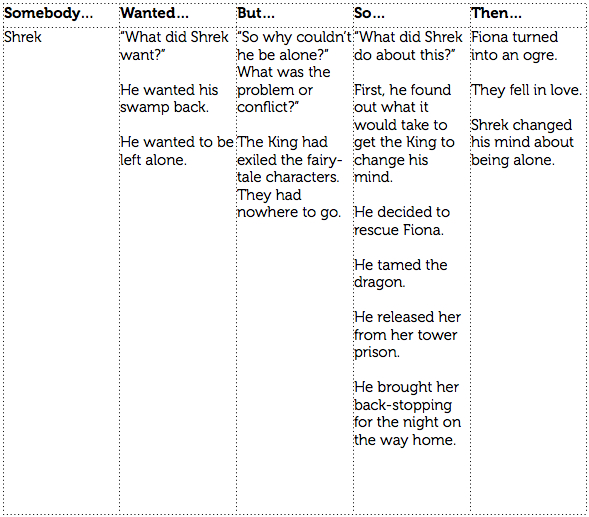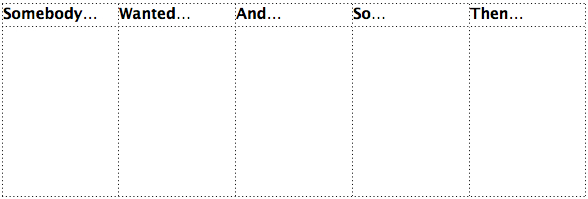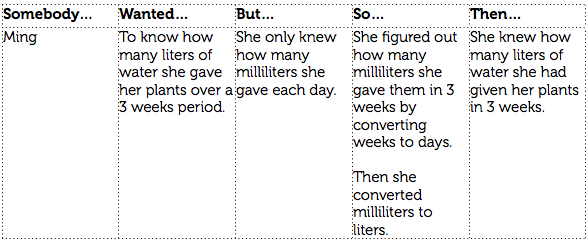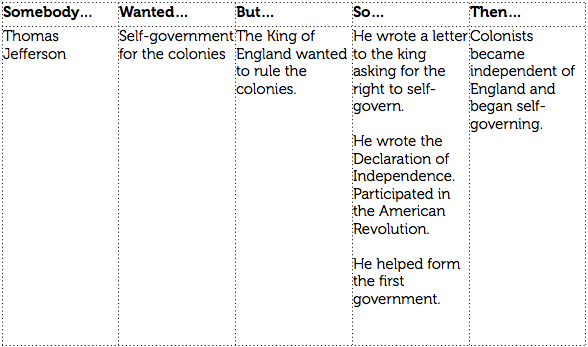Summarization Strategies
Asking students to summarize reading requires them to think at the level of analysis and synthesis. In order to become fluent summarizers, many students benefit from graphic organizers that scaffold or guide thinking about what is important in the text. Simply having a structure for organizing thinking can greatly increase student success.
For narrative texts in which characters have problems or conflicts, the most effective strategy for summarizing is the “Somebody-Wanted-But-So-Then” framework. Start with the graphic organizer on a poster board or white board and the discussion of a familiar movie or TV show episode. For example, using Shrek (the movie), I complete the chart by thinking aloud.

After filling in the chart, students can transfer the components to writing a summary in paragraph form, as well as use the criteria in each column to evaluate the “best” summary. Students can also analyze multiple characters and use this chart to compare characters’ goals and conflicts within and across texts.
For narratives texts that do not present a problem or conflict, simply change the chart to:

Keep in mind that the “So” requires thinking about the major events in the plot.
The “Then” column requires thinking about the falling action and resolution (i.e. Did the character get what they wanted?)
Students can use this framework in math to help de-construction word problems.

This structure also supports students’ summaries of Social Studies text.

Providing a structure for summarizing will help students de-construct texts for deeper comprehension. Encourage students to create their own summary charts in their Reader’s Notebook and when testing situations call for summarization of narrative texts. By drawing one horizontal line and four vertical lines, students can quickly create a chart that can be used to summarize across disciplines and real world reading! RTI Members can download a blank SWBST chart here.
Happy teaching,
Kelly Harmon
